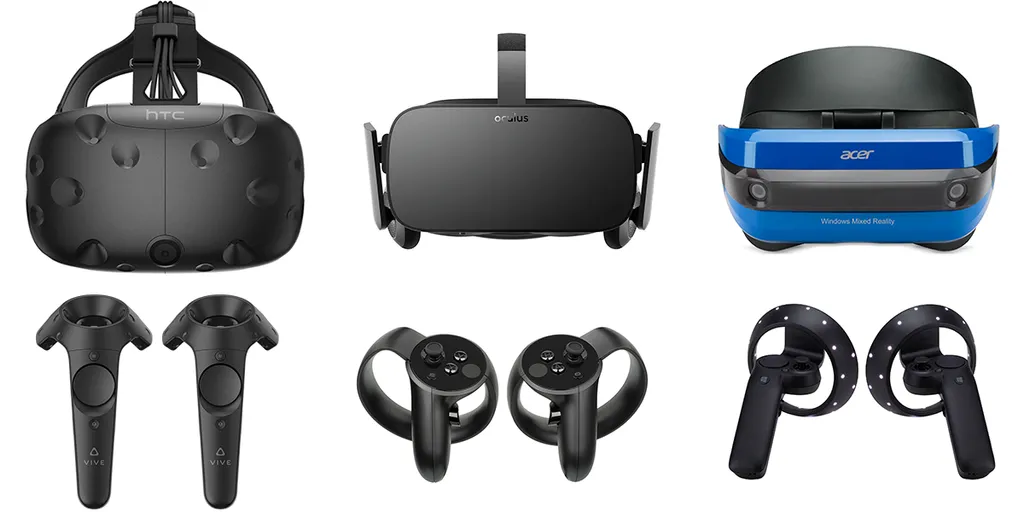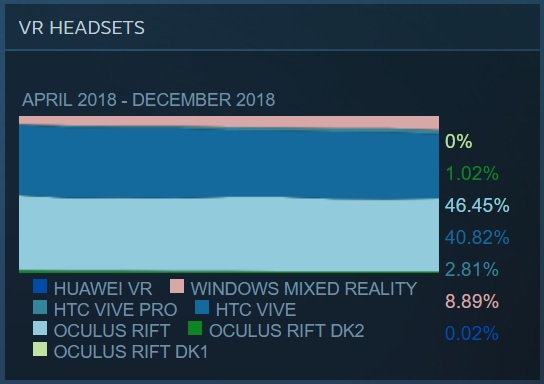I was half expecting to write that the combined power of the Vive and Vive Pro had allowed HTC to regain the top spot it once held for so long in December’s Steam Hardware Survey. Turns out the opposite is true; the Oculus Rift gained ground this month.
In November 2018’s results, there was less than 1% difference between Rift and the total of both Vive and Vive Pro. HTC looked like it had Oculus on the ropes. But, instead of continuing that trend, December saw the gap grow to 2.28%. Rift ended the month with 46.45% of the total VR user share on Steam (up from 45.88%). Vive, meanwhile, shrank to 40.82% (down from 42.76%). Finally, Pro came in at 2.81% (up from 2.5%).
No doubt Christmas sales helped Rift and Vive Pro grow in December. HTC focused on Pro for its Black Friday promotion and Oculus cut $50 off of the Rift. A lot of the headsets bought in November were probably unwrapped in December.
But don’t discredit the growth of other headsets contributing to Vive’s smaller number. Microsoft’s Windows VR headsets saw a significant leap of their own in December. The range of partner-made devices grew from 7.77% to 8.89%. Again, a wide range of sales, some of which offered the headsets for around $199, probably helped. Samsung also launched its Odyssey+ headset towards the end of the year which caused a stir.
There was also the slightest bit of growth from Huawei’s VR kit, going from 0% to 0.02%. You’ll get there, little guy!
As always, we’ll mention that these figures aren’t a definitive means of measuring the VR market. This is an optional survey and you need to have your hardware plugged in (and using Steam) for it to register. Neither HTC nor Facebook has revealed sales figures for their headsets.
Still, a new year is upon us and we’re excited to see how the scales shift in 2019. More than anything, though, we’re eager to see what new headsets might join the chart.



























